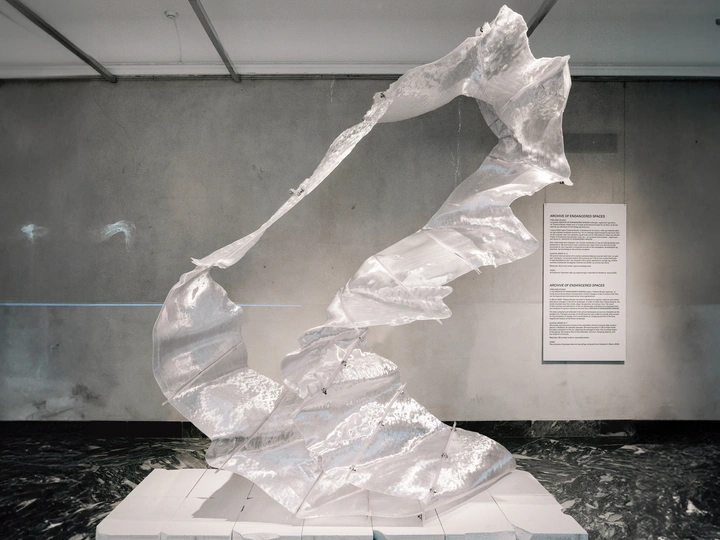Archive of Endangered Spaces

Jonas Swienty
Tideland Studio applies architectural tools in field research to capture and unfold phenomena relevant to our time. They work in the intersection between science, art, and architecture pushing the boundaries of disciplines to create experiences that inspire and educate. One of Tideland Studio's goals is to mobilize change by bringing attention to climate change. Therefore they embrace architectural technologies that enable them to register, simulate and communicate changes to natural and manmade landscapes.
Human activities threaten the destruction of a quarter of the world's natural habitats within the next 80 years. To protect endangered landscapes we need tools that enable precise documentation and engaging communication.
The Archive of Endangered Spaces employs architectural methods and technologies to explore, virtually preserve, and communicate endangered places. With the help of local actors we travel to the frontlines of the climate crisis, capturing and tracing the processes of change within landscapes (image 1+2). The data collected contributes to a growing database of interactive stories of landscapes and the human and non-human communities inhabiting them.
Our first iteration, the Svalbard-files, currently on view at Design Museum Denmark is designed to teach about the transformation of the Arctic through a sensory experience of the melting of the glaciers. Data collection was achieved by applying various spatial registration tools in field research. This allowed for perspectives not visible by the naked eye, such as the 300 meter river-like formation revealed inside the glacier. Architectural tools such as section drawings, large scale models, and data visualization help the audience comprehend the landscape, highlighting shapes, scales, and timeframes relevant to the process of melting (image 3+4).
The exhibition shows the potential of The Archive to become a platform for interactive learning and of architects to help create awareness of climate change through experience design, utilizing three-dimensional datasets, large-scale digital fabrication, and spatial design to engage the senses of audiences of all ages.
Skills and data gathered from these efforts feed into the other aspects of our practice, for example our public space Aarhus designed to create awareness of rising sea levels (image 5).
With the support of LINA, we hope to gain access to new tools and network and amplify the reach of our efforts.